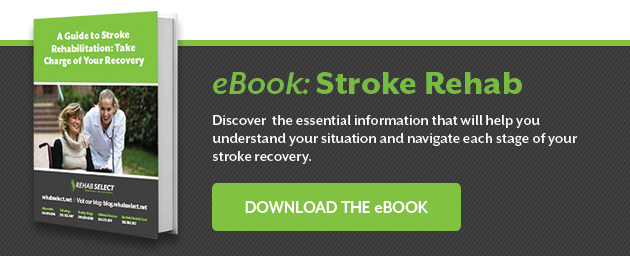
If you’re a stroke survivor or have a loved one who is, chances are you have a lot of questions about stages of stroke recovery. Since every stroke patient is different, there simply are no easy answers as to how fast or how far recovery will progress, but you should know that there are tips for stroke recovery that can help ensure better outcomes.
With that in mind, let’s dive into the importance of early rehab for the different stages of stroke recovery and three stroke recovery exercises to consider.
Why Early Rehab Is Essential for all Stages of Stroke Recovery
Early, intensive rehabilitative therapy has been shown to improve levels of recovery, so rehabilitation should begin as soon as it’s medically safe and feasible. In fact, physical and occupational therapy are often initiated before hospital discharge.
Additionally, research has shown that therapy provided by a well-coordinated, multidisciplinary team of rehabilitative specialists and in a therapeutic environment can make a substantial difference in recovery. Hence, an intensive inpatient program may be your best place to start your rehabilitation journey.
Effective stroke recovery and rehabilitation centers on retraining the brain to work around the damage it has sustained from stroke. That, according to researchers, is most effectively done with intensive daily physical and occupational therapy sessions that include repetitive, task-specific motion training to stimulate the growth of new neural pathways and connections in the brain.
Here are the top stroke recovery exercises that aid this process:
1. Range-of-motion exercises
Range-of-motion (ROM) exercises are critical for maintaining and improving the flexibility and mobility of joints, which can become stiff and immobile after a stroke. ROM exercises help keep the joints flexible and prevent contractures (permanent tightening of muscles or tendons).
Regular movement also increases blood flow to the affected areas — delivering essential nutrients and oxygen to tissues, which aids in the healing and recovery process. Keeping the joints mobile helps reduce pain and discomfort associated with stiffness and immobility.
Lastly, ROM exercises help retrain the brain and nervous system to move the limbs correctly —a crucial step for regaining voluntary movement.
2. Balance and coordination exercises focused on deficits
Stroke survivors who spend time in occupational therapy are taught how to compensate for functional deficits, or physical impairments, that result from stroke. While learning to work around those deficits is very important, if optimal recovery is your goal, so too is working to improve them.
Occupational therapy professionals stress the importance of exercising, moving, and using limbs on your affected side that may be weakened or even paralyzed by stroke. By moving and using affected arms, legs, or hands, you help the brain begin to relearn how to coordinate them properly, increasing the odds of regaining strength and function.
Don't forget about your weaker side as you go about your daily routines. While always using your stronger side may get things done more quickly and efficiently over the short term, over the long run, it can limit your level of recovery.
3. Strength exercises
These exercises focus on rebuilding muscle strength, which is often significantly reduced after a stroke. Stronger muscles contribute to better control and coordination, making it easier for stroke survivors to regain independence in their daily activities.
Without regular use, muscles can shrink and weaken. Strengthening exercises counteract this by stimulating muscle growth and maintenance. As patients see improvements in their strength and ability to perform tasks, their confidence and motivation to continue with rehabilitation increase.
Effective Stroke Recovery Is Possible
It was once believed there was a distinct window of recovery for stroke patients. However, it’s now known that continuing therapy can continue to yield functional improvements over many months — or even years — in stroke survivors.
A well-rounded stroke rehabilitation program will typically incorporate a combination of exercises. This holistic approach ensures that all aspects of mobility and function are addressed, leading to more comprehensive recovery outcomes. The guidance of a physical therapist is essential to tailoring these exercises to the individual needs of each patient, ensuring they’re performed safely and effectively.
Rehab Select is a renowned provider of stroke rehabilitation services across Alabama, boasting five conveniently located facilities and a specialized, physician-led program. At Rehab Select, you can expect to receive tailored and personalized therapy for the long-term effects of stroke. Our team of dedicated rehabilitation specialists, comprising physicians, nurses, physical therapists, occupational therapists, dietitians, and mental health professionals, will thoroughly assess your individual situation to create a personalized treatment plan.
If you’re seeking stroke recovery support for yourself or a loved one, schedule a tour of Rehab Select or contact us today.





